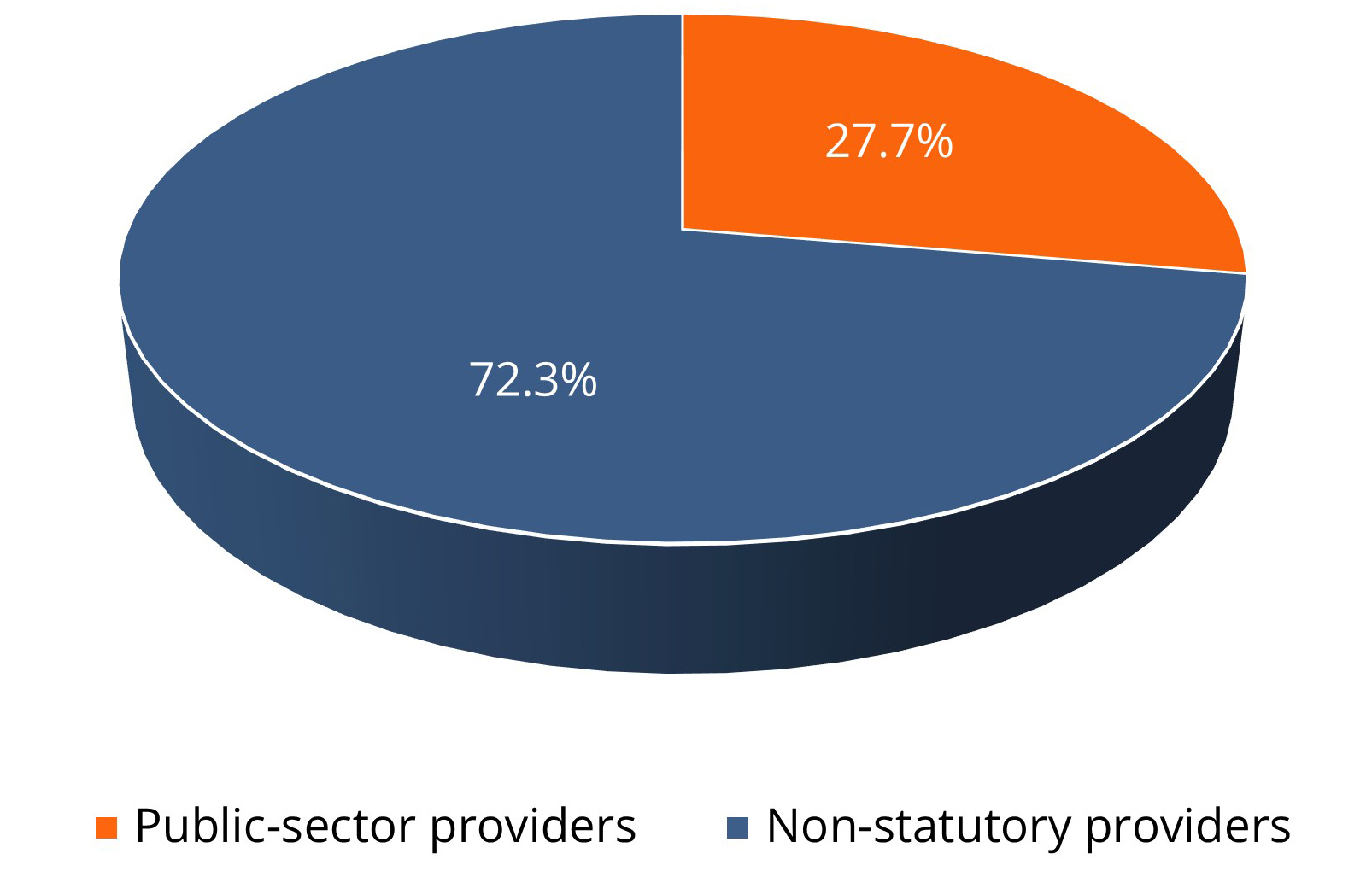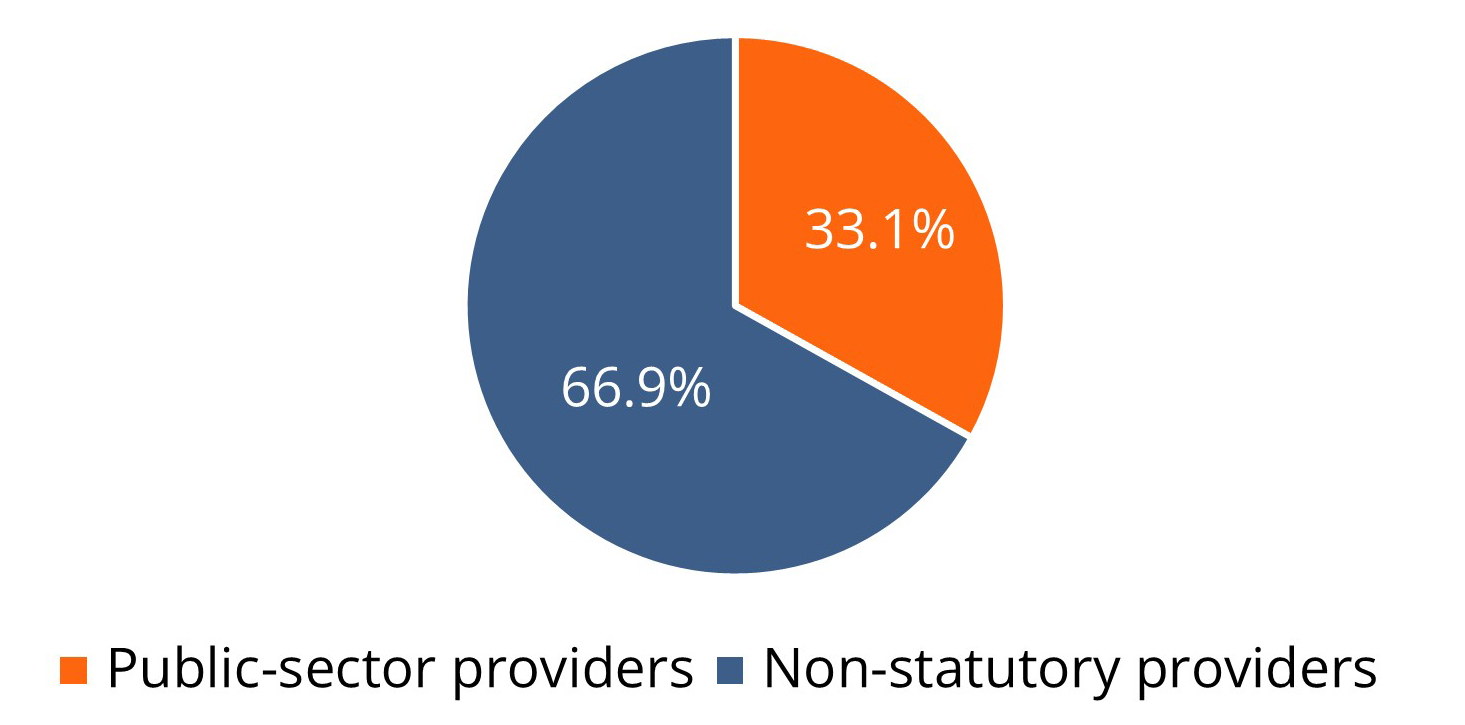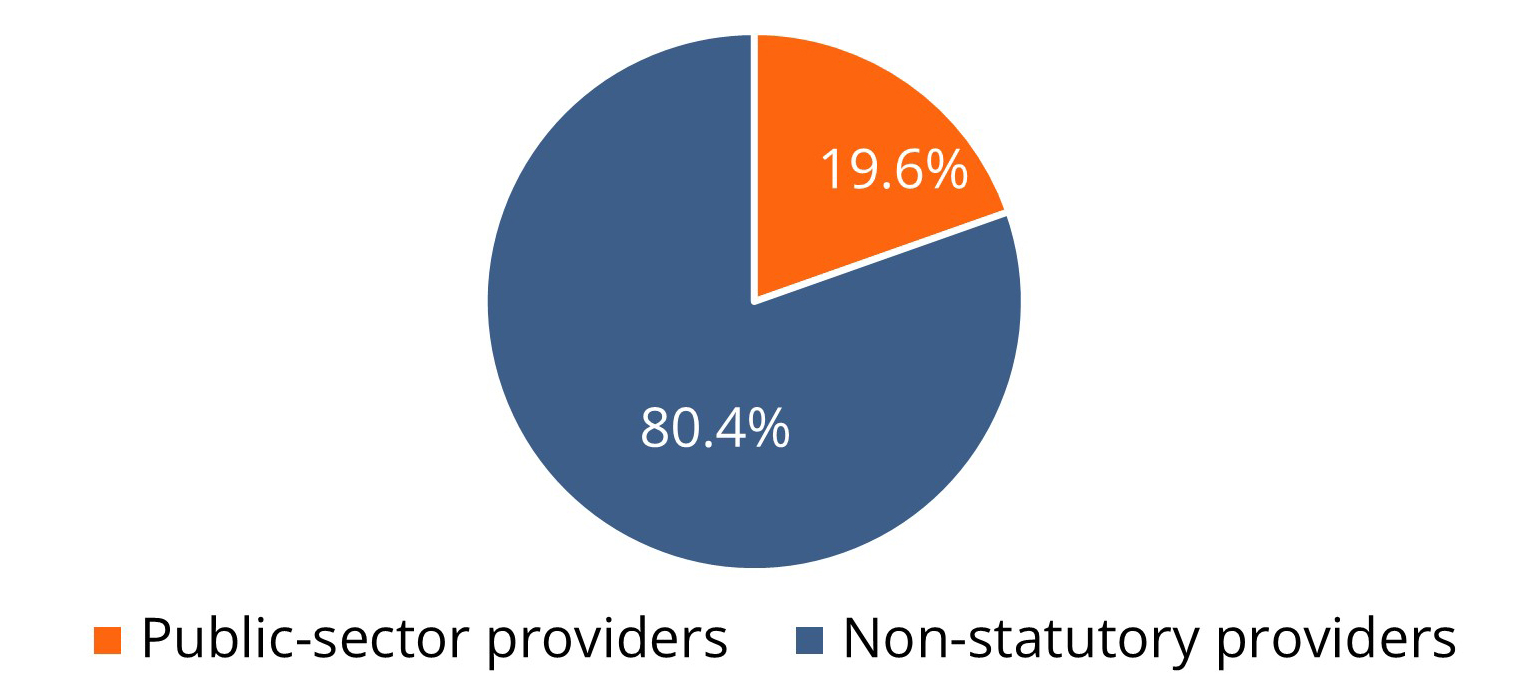Notes
Public-sector and non-statutory providers are a key pillar of the corporate welfare state. Providers in this context are legal entities and can be either regional administrative bodies – i.e., public-sector providers and, in child and youth services, predominantly the local youth welfare offices – or private companies, cooperatives, foundations and, in particular, associations; in other words, non-statutory providers. These also include the six umbrella organisations of non-statutory welfare associations: Arbeiterwohlfahrt, Caritas, Paritätische, German Red Cross, Diakonie and the Central Board of Jewish Welfare in Germany.
The number of facilities by provider group (public-sector/non-statutory) offers a glimpse at the provider landscape. These facilities are an integral part of child and youth services infrastructure and hence form part of the institutional environment working to advocate for young people, abolish inequalities, provide advice and support, create positive living conditions and provide institutional child protection. In the context of child and youth services, facilities are either independently or state operated.
According to official statistics, the lion's share of the facilities funded predominantly from public resources are operated by non-statutory providers. This goes for child day-care facilities, facilities in other areas of child and youth services and child and youth work, and residential care facilities. For example, in March 2019 some 9,400 child day-care facilities were operated by Caritas or Catholic parishes, and another 9,000 by Diakonie or Protestant parishes.
Further reading
- Autorengruppe Kinder- und Jugendhilfestatistik (2021), Kinder- und Jugendhilfereport Extra 2021 (last accessed: 10 June 2023).
- Statistisches Bundesamt: Kindertagesbetreuung. Tageseinrichtungen für Kinder nach Art und Trägern (last accessed: 10 June 2023).
- Statistisches Bundesamt (2022): Statistiken der Kinder- und Jugendhilfe – Einrichtungen und tätige Personen (ohne Tageseinrichtungen für Kinder) (last accessed: 10 June 2023).





